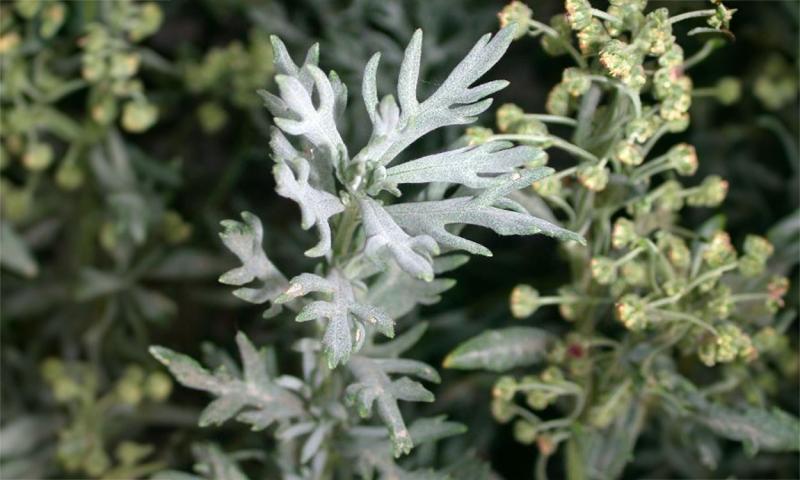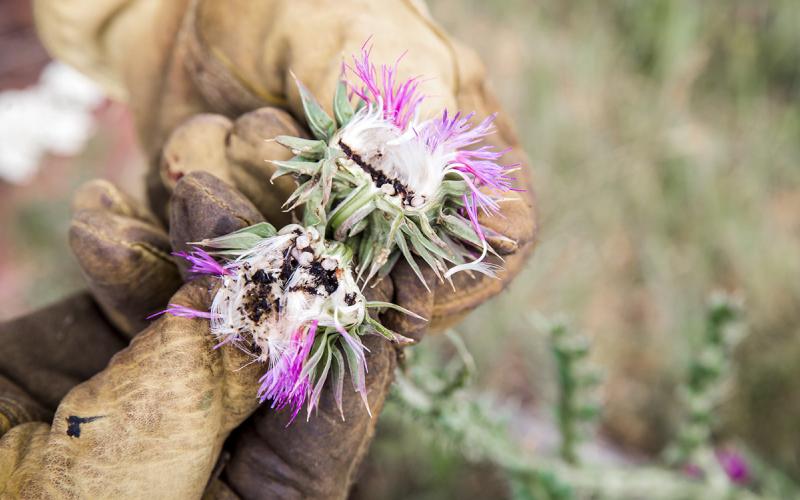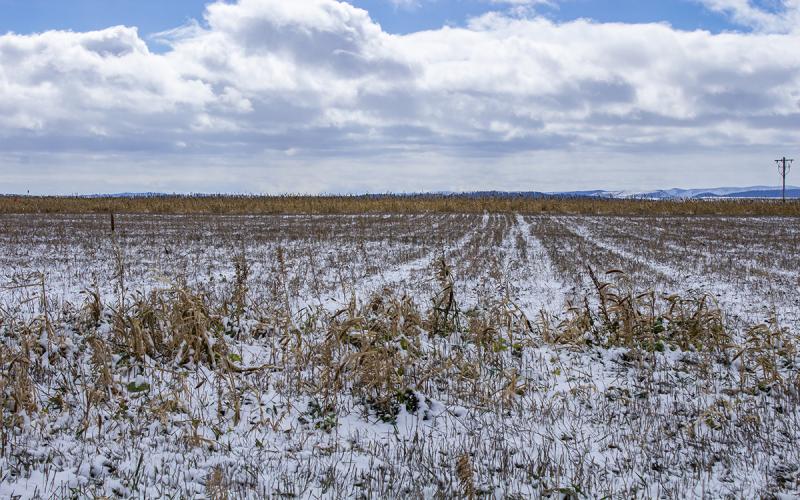
Written collaboratively by Eric Jones, Philip Rozeboom, Jill Alms, and David Vos.
Absinth wormwood is a difficult-to-control noxious weed in South Dakota. Common habitats for absinth wormwood include overgrazed pastures, fence rows, disturbed waste areas and roadsides. This weed can produce great amounts of seed (50,000 seeds per-stem) and spreads only by seed, illustrating the importance of management prior to seed production. Seeds are viable in the soil for several years, so infested areas will have to be managed recurrently.
Absinth wormwood can be confused with common ragweed (Figure 1). Two easy ways to distinguish the two species are color (absinth wormwood is more gray-green; common ragweed is more green) and when the vegetation of absinth wormwood is crushed, a strong sage odor is emitted.
Management Considerations

Spring herbicide applications are effective when applied to absinth wormwood plants in late spring (before plants reach 12 inches in height) and before plants turn “white” (Figure 2). Effective herbicides for absinth wormwood control in the spring include but are not limited to: 2,4-D (may require retreatment in the fall), aminopyralid (Milestone), dicamba, glyphosate (Roundup) (non-selective; this herbicide can kill desirable plants in proximity and is best used for spot treatment), and picloram (Tordon). Premixtures and approved tank mixtures of these herbicides are usually more effective compared to when the herbicides are applied alone. Consult herbicide labels and the latest SDSU Extension Noxious Weed Management Guide for product trade names, use/use restrictions, and use rates. In dry/drought years or in dry areas, herbicides may not be as effective. Adequate soil moisture will likely aid in the effectiveness of the herbicide application, as the plant should be actively growing. Spring-only herbicide applications may not provide effective management of this weed. Effective management plans should utilize both spring and fall herbicide applications where necessary.
While herbicides are effective, other management tactics can and should be implemented to increase control effectiveness. Mowing may need to be implemented in the spring if plants are too large to spray or it they have “white” leaves. The regrowth of the mowed plants can be sprayed in the fall. Mowing also decreases the production of seed heads. Mowing alone will not sufficiently cease seed production, as the stems growing beneath the mower blades can still produce seed. Small, isolated patches can be hand weeded or dug up. Desirable vegetation can also effectively outcompete absinth wormwood. Fertilization can help the desirable vegetation grow vigorously to shade out early germinating plants. Also, rotational grazing can be implemented to make the desired vegetation dense enough to compete with early germinating plants. Keep detailed records of absinth wormwood infestations so areas can be a focus point for management.


